PROLOGUE
The city of Amritsar in the Indian State of Punjab had been on my bucket list for a long time: the history of the rich struggle for independence from the British, the magnificent Golden Temple, Jallianwala Bagh Memorial, the Indo-Pakistan Border – Atari & Wagha and of course, to bask in its social and cultural cohesion peppered with delicious food, it is a city I have always wanted to visit. The background for this love also stemmed from my pre-teen upbringing having heard about the trials and tribulations arising from the partition, subsequent wars with Pakistan between 1947 and 1999 and the unending skirmishes thereafter. To all this, I also added to my wish list The World’s First Partition Museum recently established in the City of Amritsar.
PARTITION
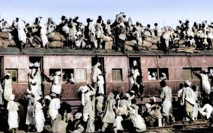 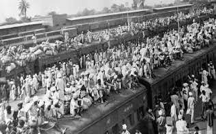 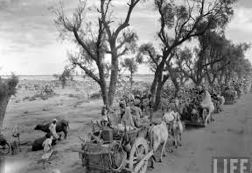 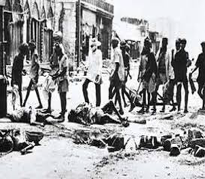
(Images available in the public domain)
As a fall out of the Second World War, the British suffered huge economic crisis and was unable to administer its colonies in a manner it used to earlier. Along with that, most of the colonies had been clamoring for independence and had strong anticolonial movements emerging before and after the Second World War. Over a period, a vast number of such colonies, particularly in Asia, gained independence either peacefully or with wide-spread violence. The independence in the Indian sub-continent, resulted in carving out a new nation-state from out of India, based on religion. Although there was an old demand for a separate state comprising of Muslim populated provinces/areas, the British carried out its ‘supposed’ decolonization of the sub-continent in a most haphazard manner such that this new State of Pakistan was carved out of Punjab Province in the West and Bengal Province in the East resulting in wide-spread communal violence, destruction of properties, human killings, rape and arson. All this to create two separate states—India and Pakistan—in August, 1947.
An estimated 14 million people, according to the UNHCR, were displaced and a couple of million people were mercilessly killed at the time, as Muslims in India fled to Pakistan and Hindus and Sikhs in Pakistan fled to India. A large number of Muslims stayed back and made India their home. This exodus of people continued for a few years after August 1947. This is a classic example of the collapse of the British Empire’s moral and ethical right to rule leading to destruction and not peaceful decolonisation.
Partition briefly summed up was a situation in which a large populace of over 14 million suddenly found itself displaced, deracinated in unknown environs, with no means of livelihood, everything burnt and destroyed, and their dear ones brutalised and killed.
WHY A PARTITION MUSEUM?
Museums are usually constructed with an ideology or goal for preserving history, to educate people about the art & culture, science & technology and at times, about rulers, their pompous imagery and extravaganza. But why, a Museum devoted to the partition of Indian Sub-Continent? And that too after 70 long years of independence? The gory violence that ensued during Partition, the trials & tribulations of the victims, misery and deprivation are memories and markers that remain as indelible scars of the Partition. Those who suffered, rarely talked about it, perhaps only to protect their children from that stark memory and sadness; there was also an element of resilience on how to resurrect from a tragedy by keeping their losses buried and sanity intact.
The Partition museum offers a space to people across faiths and beliefs to experience and memorialise a past that is a reminder of a founding trauma within the subcontinental history and culture. As with the curation of most museums, it does not offer any opinion but allow visitors to browse through a history, learn and reflect on the loss and violence that continues in its past legacy into present lives of India-Pakistan and Bangladesh.
ABOUT THE PARTITION MUSEUM
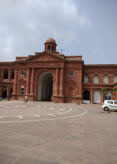 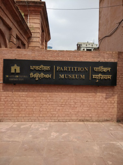 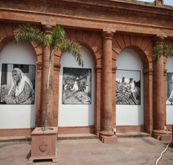
The Partition Museum is located close to The Golden Temple and in the vicinity of the Jallianwala Bagh. Kishwar Desai, Chair, The Arts & Cultural Heritage Trust (TACHT) co-founded this Museum, and it has been curated by Mallika Ahluwalia. It opened on 17th August 2017, as the world’s first Partition Museum, and is partly self-financed and crowd-funded, through the venture of a private trust – TACHT.
The space for this Museum was allotted by the Government of Punjab. In an interview, Kishwar Desai emphasizes, “You can’t walk away and shut the door behind you, and it was singularly important that children and young adults know about what had happened.” In the same interview, she clarifies, that the city of Amritsar has had a strong historical and bloody link with the partition. It was the first railway station for trains coming from Lahore and witnessed much of the bloodshed that occurred here.
A VIEW OF THE MUSEUM
The Museum has a total of 14 galleries in its premises and is truly a “People’s Museum.”
Photography is strictly prohibited and maintaining silence is expected. The saga of the sordid Partition unfolds through the 14 galleries that begins with the history of Amritsar and traverses through the historical journey of colonial resistance, Partition violence and redrawn borders, and ends with hope. These galleries divided as:
▪ About Amritsar
▪ About Punjab
▪ Resistance 1900-1929
▪ The Rise 1930-45
▪ Differences 1946
▪ Prelude to Partition
▪ Boundaries
▪ Independence
▪ Borders
▪ Migration
▪ Divisions [2]
▪ Refuge
▪ Hope
Apart from well-collated documents and many haunting and graphic images of the communal violence, the Museum has few installations in the form of a replica of a devastated home, a water well where women-folks jumped to death to save their honor, a police custody room; audios of a piercing whistle of a steam engine train which had ferried the refugees, announcements in a village and/or refugee camps about availability of food, water and cautionary ones for ensuring personal safety.
There are several paintings adorning the walls, by S.L. Parasher, a refugee himself whose life was upturned by the partition. His paintings hauntingly represent the pain, misery and agony of people. There is also a huge cache of personal memorabilia in the form of letters exchanged between separated spouses, members of family reflecting despair and occasionally a ray of hope. Some are especially heart-rending, where a separated spouse loses hope of reunion as he sees mindless violence, cruelty and destruction all around. These were donated by the members of families that were impacted by the Partition.
The Museum also includes interviews of survivors to include their stories of grit and how they surmounted inhuman difficulties. Videos of some of very prominent and not so known personalities who travelled long distances, either on foot or on extremely crowded trains braving fear, atrocities and killings, are placed across galleries which one can see and hear. Most of these videos and a virtual tour of the Museum can be accessed on Museum’s website.
Various documents displayed at the Museum present the reasons behind the great Bengal famine, debates between political leaders and heads of princely states, minutes of meetings held by the then Viceroy Lord Mountbatten, hasty appointment of Sir Cyril Radcliffe in the month of June 1947 to complete his task of demarcating the boundaries before 15th August 1947, and Lord Mountbatten suppressing notification of the divided land till 17th August 1947 i.e., two-three days after the new nation-states had already come into the being. As I walked through the galleries, absorbing the intense experience, some of which cannot be imprinted in words, it was heartening to see a mixed crowd of young and old, Indian and foreign nationals, students and professionals pouring through the exhibits, trying to unravel the history of partition through lived experiences.
EPILOGUE
As I exited the museum, after spending three long hours inside it, my wife and I could not help but take a long pause to sit and ponder; suffused with emotions, we wondered how it was possible for a fading British Raj submitting power to India, to draw a boundary dividing a huge 175,000 square miles area with 88 million people within five weeks. As briefly mentioned before, the report of Sir Cyril Radcliffe’s partition was suppressed until three days after the partitioning had occurred i.e., on 17th August 1947. The communal violence and displacement of people had begun much before the transfer of power. During more than 200 years of reign, the British Raj laid down elaborate laws to govern the people of the Indian subcontinent; they also could foresee the impending chasm and violence. But their governance stopped there; instead, they left a calamitous trauma and eternal rift on these postcolonial nation-states. The Partition Museum becomes a mnemonic reminder of this complex history at a time, when we only hear history with vested interests and communities divided around us. The museum renders a memory alive whose narrative is not to break, but a cautionary reminder against it.
**********
|










